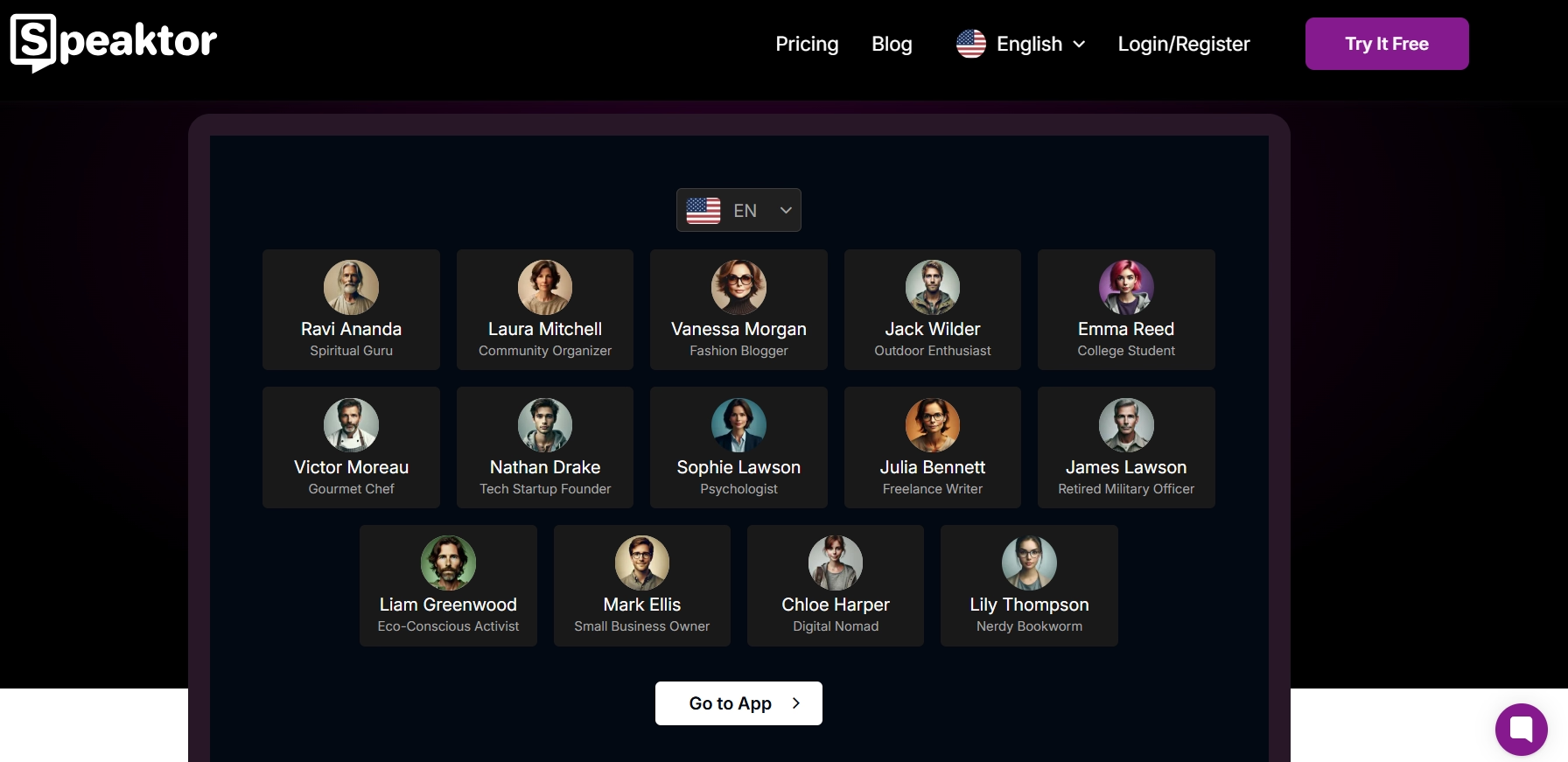
Audio Localization: Definition, Importance, and Tools
Table of Contents
- What Is Audio Localization and Why Does It Matter for Global Content?
- What Essential Steps Create Effective Audio Localization?
- How Does Text-to-Speech Technology Transform Audio Localization?
- Which Audio Localization Tools Deliver The Best Multilingual Results?
- What Steps Should Businesses Take For Effective Implementation?
- Conclusion
Turn Texts into Speech and Read Aloud
Table of Contents
- What Is Audio Localization and Why Does It Matter for Global Content?
- What Essential Steps Create Effective Audio Localization?
- How Does Text-to-Speech Technology Transform Audio Localization?
- Which Audio Localization Tools Deliver The Best Multilingual Results?
- What Steps Should Businesses Take For Effective Implementation?
- Conclusion
Turn Texts into Speech and Read Aloud
Audio localization transforms content for different language markets, enabling businesses to connect globally with authentic communication. Research shows 75% of consumers prefer native-language content, with localized audio generating 6x higher engagement than English-only content. In this blog, we explore essential strategies, technologies, and best practices for effective audio localization, helping you adapt content while maintaining quality and cultural relevance. In this blog, we will define what is audio localization, explain why localizing audio is essential, and explore what are the best tools for audio localization.
What Is Audio Localization and Why Does It Matter for Global Content?
Audio localization adapts spoken content across linguistic and cultural boundaries, going beyond basic translation to create authentic communication experiences for target audiences. Unlike simple word-for-word translation, comprehensive audio localization considers cultural nuances specific to each region, technical requirements for different distribution platforms, and unique audience expectations regarding vocal delivery and presentation style.
Statistical evidence from cross-market studies shows localized content increases conversion rates by up to 70% compared to English-only versions and improves customer satisfaction metrics by 74%, demonstrating the substantial business impact of effective localization strategies.
For organizations implementing global strategies, audio localization provides competitive advantages through several key mechanisms. It creates authentic audience connections in target markets by speaking to customers in a way that feels personal and relevant. It demonstrates cultural respect and understanding, positioning the organization as one that values diversity and invests in meaningful communication. It enables expanded market reach by removing language barriers that might otherwise exclude potential customers, while enhancing brand consistency across regions by ensuring core messaging maintains its integrity while adapting appropriately to local contexts.
The industries benefiting most from comprehensive audio localization include e-learning providers needing educational content to communicate clearly and engage students effectively; marketing agencies creating campaigns for diverse international audiences; entertainment companies distributing content across multiple territories; corporate communications departments ensuring consistent messaging across global teams; and software developers requiring intuitive user experiences for international markets. In each case, effective audio localization transforms content from merely understandable to genuinely engaging, creating stronger connections with international audiences and delivering measurable improvements in business metrics related to engagement, conversion, and customer satisfaction.

What Essential Steps Create Effective Audio Localization?
Creating successful localized audio content requires a structured approach addressing linguistic, cultural, and technical considerations:
How Should Content Be Prepared for Multilingual Audio?
Proper content preparation establishes the foundation for successful audio localization. Script analysis involves identifying cultural references, idioms, and humor requiring special translation attention to maintain meaning across languages. Terminology standardization creates consistent term glossaries across language versions, ensuring key concepts maintain clarity throughout all materials.
Text expansion planning accounts for languages requiring more words than English—German and Finnish texts typically expand 30% longer, which affects timing and formatting. Context documentation provides translators with detailed background information about content purpose and audience expectations, enabling more authentic adaptation.
What Makes Language Adaptation Effective for Audio Content?
Effective language adaptation requires specialized approaches beyond word-for-word translation:
- Transcreation Implementation: Use creative translation preserving intent and emotional impact rather than literal translation.
- Native Speaker Review: Have native speakers verify scripts sound natural when spoken aloud.
- Cultural Reference Adaptation: Adjust examples and metaphors to resonate with target cultures.
- Pronunciation Guidance: Provide pronunciation guides for specialized terms and brand names.

How Do Voice Selection and Customization Impact Audio Localization?
Voice selection significantly influences audience reception of localized content:
- Voice-Brand Alignment: Choose voices matching brand personality and resonating with target demographics.
- Regional Accent Considerations: Determine whether standard or regional accents better serve content goals.
- Cross-Language Consistency: Maintain consistent voice style across language versions.
What Quality Assurance Methods Ensure Effective Localization?
Quality control ensures localized audio meets professional standards:
- Native Speaker Review: Have linguistic experts evaluate pronunciation, timing, and natural flow.
- Technical Quality Verification: Check for consistent audio specifications across language versions.
- Contextual Testing: Test audio within intended deployment environments.
How Does Text-to-Speech Technology Transform Audio Localization?
Modern TTS systems have evolved from robotic outputs to remarkably human-like speech with natural intonation and emotional variation, which is especially beneficial when considering TTS for non-native speakers. This technology offers significant advantages for audio localization:
- Faster production timelines and simpler updates
- Consistent quality across multiple languages
- Substantially reduced costs compared to studio recording
- Scalability for high-volume content requirements
How Does AI Power Multilingual Audio Content Creation?
AI-driven speech synthesis creates new possibilities for audio localization:
- Neural Networks: Deep learning systems analyze thousands of speech hours to generate natural-sounding voices.
- Prosody Modeling: Advanced AI replicates natural speech patterns including rhythm, stress, and intonation.
- Language-Specific Optimization: Systems train on native speakers for authentic language delivery.
These technological advances have democratized high-quality audio localization, making it accessible to businesses of all sizes.
Which Audio Localization Tools Deliver The Best Multilingual Results?
Selecting the right tools directly impacts quality, efficiency, and cost-effectiveness. The market offers several excellent options for audio localization:
- Speaktor: Best for comprehensive AI-powered localization with 50+ languages
- Rev: Ideal for premium content requiring human translation quality
- Papercup: Specialized for video content with lip-sync capabilities
- Descript: Perfect for content creators needing combined editing and voice generation
- Resemble.ai: Optimal for maintaining consistent brand voice across languages
Here's a detailed comparison of these top audio localization solutions:
Tool Name | Key Strength | Best For | Price Model | Special Feature |
|---|---|---|---|---|
Speaktor | AI-powered with 50+ languages | Comprehensive projects | Subscription-based | Multi-speaker capability |
Rev | Human translation quality | Premium content | Per-minute pricing | Expert translators |
Papercup | Video synchronization | Video content | Project-based | Lip-sync technology |
Descript | Integrated editing | Content creators | Tiered plans | Text-based editing |
Resemble.ai | Voice customization | Brand consistency | API-based pricing | Voice cloning |
Speaktor
Speaktor stands as the industry's leading AI-powered localization solution, leveraging neural voice synthesis to transform content into multiple languages with remarkably natural-sounding voices. The platform's proprietary voice engine analyzes linguistic patterns from thousands of native speakers to generate speech that captures natural cadence and emotional nuances, consistently outperforming other solutions in blind listening tests. With support for over 50 languages and an intuitive interface, Speaktor has revolutionized how global organizations approach audio localization by eliminating traditional constraints of studio recording while achieving comparable quality results.
Key Advantages:
- Extensive language support with over 50 options
- Natural-sounding voice technology
- Flexible input options (PDF, DOCX, TXT)
Limitations:
- AI voices may not match human emotion for highly dramatic content
- Some specialized terminology may require pronunciation guidance
Speaktor's workflow involves uploading documents, selecting languages and voices, and downloading the final audio in preferred formats. The platform also offers features like pdf voiceover, making it valuable for organizations with substantial localization requirements.
Rev
Rev specializes in human-performed transcription and translation services for premium-quality audio localization projects. The platform connects clients with professional translators and voice actors through a carefully vetted network of language professionals with specialized knowledge across industries. This human-centered methodology ensures that complex terminology, cultural references, and emotional nuances translate effectively between languages.
Key Advantages:
- Professional human voice talent
- Industry specialization for technical content
- Customizable direction options
Limitations:
- Higher costs than AI solutions
- Longer production timelines
Papercup
Papercup offers specialized AI dubbing in media technology designed specifically for video content localization. The platform analyzes original video content to create localized audio that maintains natural timing with on-screen mouth movements and visual action cues, solving one of the most persistent challenges in video localization.
Key Advantages:
- Advanced lip-sync optimization
- Video-specific features
- Emotional voice mapping technology
Limitations:
- More limited language options
- Primarily focused on video applications
Descript
Descript provides an integrated platform combining audio editing with transcription and voice synthesis capabilities. The system transforms audio content into text-based format that makes spoken material editable through text manipulation. This innovative approach eliminates barriers between content creation and localization by unifying them within a single workflow where creators can draft, edit, translate, and generate localized audio without switching between specialized tools.
Key Advantages:
- Transcript-based editing for intuitive workflow
- Multi-track capabilities for complex projects
- Comprehensive editing tools
Limitations:
- Less specialized for pure localization
- Voice quality varies across languages
Resemble.ai
Resemble.ai specializes in voice cloning technology for creating personalized voice identities applicable across multiple languages. The platform analyzes voice samples to generate custom synthetic voices that maintain distinctive characteristics while speaking different languages, enabling organizations to develop a unique vocal identity that remains recognizable regardless of language.
Key Advantages:
- Brand voice development and consistency
- Emotional range control
- Flexible API-based integration
Limitations:
- Requires more technical expertise
- More complex workflow management
What Steps Should Businesses Take For Effective Implementation?
Implementing effective audio localization requires strategic planning and systematic processes:
- Audit existing content identifying priority materials with highest ROI potential
- Research target markets determining specific language requirements
- Select appropriate localization tools matching content requirements
- Create pilot projects testing workflows before full implementation
- Establish quality control processes ensuring consistent standards
- Measure performance through engagement metrics and audience feedback
Organizations should consider these best practices:
- Begin with high-value content directly impacting business objectives
- Establish consistent quality standards across all localized materials
- Incorporate native speaker review in quality assurance workflows
- Build scalable processes supporting ongoing localization needs
Conclusion
Audio localization represents a powerful opportunity for connecting with global audiences through their native languages. The implementation of proper localization strategies delivers measurable business benefits including increased engagement, improved conversions, enhanced brand perception, and expanded market reach.
The evolution of AI-powered solutions has transformed the accessibility and affordability of professional audio localization. With comprehensive language support and intuitive workflows, modern tools enable businesses of all sizes to create high-quality localized audio efficiently. Organizations should implement audio localization strategies to gain competitive advantages in global markets and build stronger international brand presence through culturally relevant content.
Frequently Asked Questions
Successful culturally relevant audio content goes beyond word-for-word translation to adapt cultural references, humor, narrative styles, examples, and formality levels to match target market expectations. It requires collaboration with local experts and testing with native audiences to ensure the content resonates authentically.
Audio localization is the process of adapting audio content for different language markets and cultural contexts. It's important because studies show that 75% of consumers prefer content in their native language, and localized content generates 6x more engagement than English-only content, significantly increasing conversion rates and customer satisfaction.
The essential steps include content preparation (script analysis, terminology standardization), language adaptation (transcreation rather than direct translation), voice selection based on target market preferences, and thorough quality assurance with native speaker reviews. Each step requires careful planning and cultural adaptation to ensure effectiveness.
Speaktor supports over 50 languages for text-to-speech conversion, making it an ideal solution for global content strategies. This extensive language coverage enables businesses to reach diverse international markets with localized audio content efficiently and cost-effectively.

